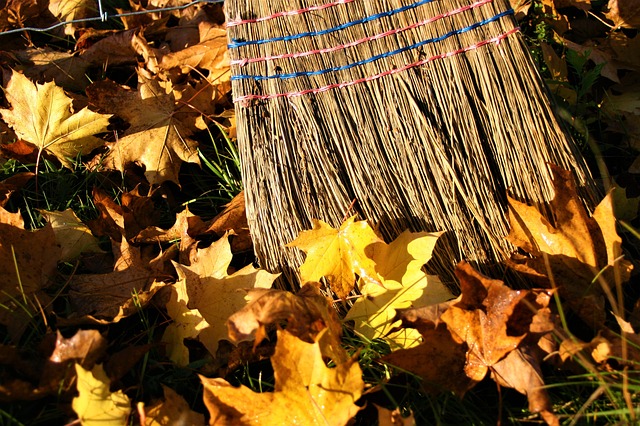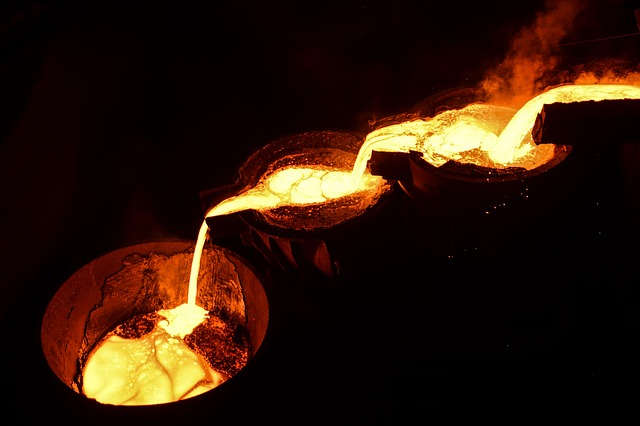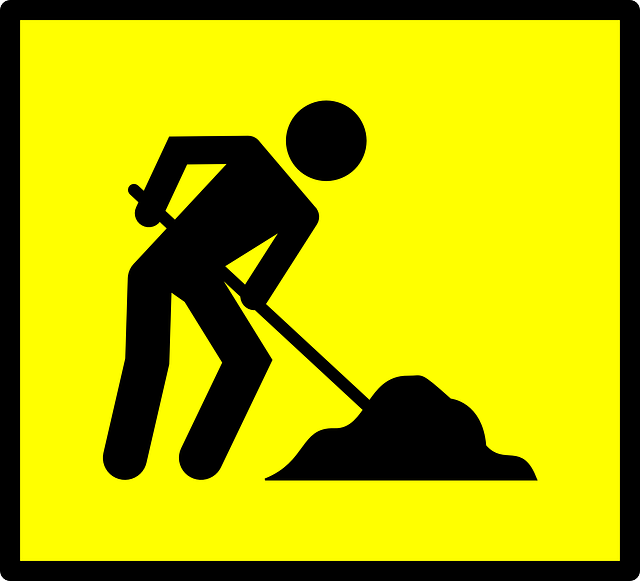25 Meditation Practices Leading to Enlightenment
Once upon a time, the wisest soul around lovingly gathered his top students. All beings who became enlightened through 25 practices circled around the Buddha one balmy evening. The Buddha Shakyamuni knew that his students have valuable lessons to share with those of the present and future, so he asked each: “Tell me how you entered meditative absorption and actualized your potentiality for wisdom and compassion.”

Here is a summary of what they shared. The final one, the 25th practice on the sense faculty of listening, will be discussed in more detail in the next blog post.
- Ajnata Kaundinya on the object of sound.
The Buddha gave his first teaching upon enlightenment at Deer Park. Four other fellow monks and I were the ones to receive the Four Noble Truths. The Buddha’s voice is the object of sound that made me realize that sounds only pass through, coming and going. I became enlightened by contemplating the source of the object of sound.
This is the best practice I know.
- Upanishad on the object of form.
I like women. I always notice the most attractive features in women and spend a lot of time and energy on those visuals. I contemplated how beautiful sights are ultimately bones, blood, oozing pus, and finally, emptiness. By focusing on impurity in women for a man like me, I move from lust to the wish to vomit to accessing the source of my visions.
This is the best practice I know.
- Youth Adorned Fragrance on the object of scent.
 Once I entered a room with an altar. The smell from the lit incense enveloped me. As I meditated, I contemplated the source of scent. That fragrance is actually not from incense only, smoke only, or burning only. Were the smell from the incense itself, the stick would not need to burn. Were the smell in the air, the incense need not burn and yet the scent would be omnipresent. The object of scent does not come from anywhere and does not go anywhere. I entered deep meditation states as a result and reached enlightenment.
Once I entered a room with an altar. The smell from the lit incense enveloped me. As I meditated, I contemplated the source of scent. That fragrance is actually not from incense only, smoke only, or burning only. Were the smell from the incense itself, the stick would not need to burn. Were the smell in the air, the incense need not burn and yet the scent would be omnipresent. The object of scent does not come from anywhere and does not go anywhere. I entered deep meditation states as a result and reached enlightenment.
This is the best practice I know.
- Dharma-Princes Physician King and Superior Physician plus their 500 companions on the object of taste.
Since time immemorial we have been herb doctors. We have tasted all kinds of things for medicinal purposes, from the bitter to the sour, the salty to the sweet, the bland to the pungent, and more. As we made offerings to the Buddha, we contemplated deeply the source of flavors and learned that the nature of flavors is neither empty nor existent. The source of flavors is neither emptiness nor existence, neither body nor mind, neither apart from body nor mind. The source of flavors is not in the tongue and is not apart from the tongue. We contemplated in this way until we could contemplate no longer. As we reached the fundamental flavor that is flavorless, we reached enlightenment.
This is the best practice we know.
- Bhadrapala and 16 protectors on the object of touch.
We became monastics when King of Awesome Sound Buddha was in the world. I, Bhadrapala, in particular, was an arrogant fool who used to beat and slander one of the earlier incarnations of Shakyamuni Buddha. And now I am actually in the former Bodhisattva Never Slight’s monastic order!
As a monk, I took my then customary nightly bath, I experienced peace when I felt water. All of us came to realize that water neither removed grime nor cleansed the flesh. There was no tactile sensation, only a tranquil state where there is nothing at all.
This is the best practice we know.
- Mahakashyapa, Purple-golden Light Bhikshuni on the object of thinking.

My wife and I glow with a sheen. My body is so because I studied under the Buddha Sun Moon Lamp in one lifetime. After his passing, I made offerings to his relics, including lit oil lamps. From then on, my body always shone with a perfect hue in life after life. Purple-golden Light Bhikshuni shines with the same light because she begged to raise funds so a dilapidated Buddha statue during Kashyapa Buddha’s time may be restored and gilded gold again. I was a goldsmith then and offered to help. We became married in that life and many lifetimes thereafter.
Both of us are practitioners. I am known for my ascetic practices. We contemplate the six sense objects, since thoughts are essentially shadows to the other five sense objects and cannot come to be without sound, form, scent, flavor, or tactile sensation. All six interact, change, decompose, and are ultimately empty. Through meditative absorption, I no longer focus on my discriminating thoughts. Millions of eons zoom by as if an instant.
This is the best practice we know.
- Aniruddha on the eye organ.
When I first became a monk, I slept a lot. The Buddha’s scolding made me weep. I was determined not to rest. For seven days I did not sleep, becoming blind.
The Buddha taught me to see without my eyes. I meditated until I saw all throughout the cosmos so clearly, as if everything were before my eyes.
This is the best practice I know.
- Kshudrapanthaka on the nose organ.
I am not too smart. I tried to memorize a four-line verse when I first became a monk but could not. My older brother, who is also a monk, became so ashamed of me that he told me to go home. I wanted to kill myself; if I cannot remain a monk I’d rather die. The Buddha manifested as a tree spirit and reminded me not to hang myself. As I wondered out loud, asking, “Why am I so dumb?” The Buddha showed himself and explained that in a former incarnation I was a teacher with 500 disciples who were eager to learn. I refused to teach them or anyone who requested, or even pleaded for the teachings. For my miserliness with the Dharma, I have a low IQ now. And for that, I am ashamed. I took to heart the Buddha’s admonitions about teaching what I know where I go and never be jealous of others’ wisdom. Then the Buddha asked if I can remember to pick up a broom everyday and just remember to, “sweep, sweep, sweep away.”
 I did just that. I swept away my worries, my stinginess, my guilt by focusing on my breathing. I observed the subtleties of how my breaths rise, stay, change, and cease. I reached meditative absorption in this way.
I did just that. I swept away my worries, my stinginess, my guilt by focusing on my breathing. I observed the subtleties of how my breaths rise, stay, change, and cease. I reached meditative absorption in this way.
This is the best practice I know.
- Gavampati on the tongue organ.
I was born with a deformity of the tongue. My tongue is large, long, and flaps back and forth like a cow chewing cud. I understand that in one of my lives past I had teased an old, toothless monk who takes a long time to eat. I mocked him: “Man, you eat like a cow eating grass!” The old practitioner was quite advanced and asked me not to talk like that, otherwise I would have to face consequences in the future. I did apologize, which prevented me from becoming a cow, but not from a slight resemblance to a cow chewing. To avoid regular people who see me now incur retribution from laughing at me or bullying me, I mostly keep company with celestial beings who can read people’s past lives easily, hence will not be cruel and end up hurting themselves.

The Buddha taught me to focus on one taste alone, which requires a razor-sharp mind. When I am not discriminant with flavors, all flavors are one, a flavorless flavor. When there is not a flavor at all, not anything at all, my mind is pure and clear.
This is the best practice I know.
- Pilindavatsa on the body organ.
Just as my name indicates in Sanskrit, I have “habits remaining” from my past. One notable example is from a previous incarnation as an advanced practitioner under the Buddha. I had the ability to stop river flow by calling on the river spirit. One day I was at the riverbank and called on the female river spirit. She had been my servant in another lifetime so I yelled, “Servant girl, servant girl!” The river spirit was not happy with that epithet, so she complained to the Buddha, who asked me to apologize. When I offered my apology, I put my palms together and said, “I’m sorry, servant girl.” This is how ingrained my habit.
As for my practice as a monk now, I came to an awakening when I was pricked by a thorn while out on alms round. While my body felt the pain, there was an awareness to me that was able to observe the pain and the feelings associated with it. I realized that at the source, there was neither pain nor awareness of pain. I contemplated in this way for 21 days and reached enlightenment.
This is the best practice I know.
- Subhuti on the mind organ.
I had an inherently profound understanding of emptiness. My name means “born into emptiness” because when I was born, all valuables at my house disappeared, only to reappear again seven days later. My mind tends to be free and tranquil. I recognize the nature of emptiness to such an extent that everything throughout the cosmos is empty to me. When Shakyamuni revealed to me that enlightenment is just true, bright emptiness, I entered that state.
This is the best practice I know.
- Shariputra on the eye consciousness.
When I was a layman, I saw some monks on a walk and was so impressed, I approached them. One of them recited a verse for me and told me that the Buddha is their teacher. I joined the monastic order and practiced until my visual awareness became bright and perfected.
This is the best practice I know.
- Samantabhadra Bodhisattva on the ear consciousness.
I am known for ten magnanimous vows:
- To venerate all Buddhas.
- To praise all Buddhas.
- To give generously.
- To repent of past misdeeds.
- To rejoice in others’ goodness.
- To request the teachings.
- To ask that the Buddhas abide in our world.
- To learn from the Buddhas always.
- To accord with living beings.
- To dedicate merit to all throughout time.
My intent and my practice in listening for what beings near and far understand so that I may assist them are sourced from my ultimately at-ease mind.
This is the best practice I know.
- Sundarananda on the nose consciousness.
I am easily distracted. I have a short attention span. Out of compassion, the Buddha taught me to watch the tip of my nose. I tried this intently for three weeks, at which point I saw my inhalations and exhalations, like smoke. My body and mind became light and I understood the world. Everything became pure emptiness, translucent like crystal.
This is the best practice I know.
- Purnamaitreyaniputra on the tongue consciousness.

Communication is my forte. People love what I say and I enjoy speaking. Whereas the number one fear for most people is public speaking, I give eloquent talks without any fear. More importantly, my instructions lead to real and subtle insights about profound doctrines. With my tongue I sound the wonders of the Dharma.
This is the best practice I know.
- Upali on the body consciousness.
I have accompanied the Buddha since he was a prince. I watched Siddhartha sneak off, away from the luxury of the palace and learned about birth, old age, sickness, and death. I served Siddhartha when he made the decision to become a sage, not a king. I followed Siddhartha when he left his family and fled. I followed him when he was an ascetic for six years. I witnessed Shakyamuni struggle with Mara then awaken beneath the Bodhi tree. Throughout this life and others in the past, I adhered to these precepts:
- To refrain from harming a living creature.
- To refrain from taking from another without permission.
- To refrain from sexual misconduct.
- To refrain from dishonesty.
- To refrain from intoxicants.
And the following more rigorous ones for laypeople:
- To refrain from ornamentation, perfume, or jewelry.
- To refrain from entertainment, grand or luxurious bed.
- To refrain from eating at improper times.
I uphold the precepts to discipline the body and mind. I observed these guidelines until I became physically and mentally at ease, free from the remotest of transgressions. I experienced a meditative absorption that is joyous, peaceful, and luminous.
This is the best practice I know.
- Mahamaudgalyayana on the mind consciousness.
Shariputra, my friend, came home one day and told me about a Buddhist verse that he learned from monks he met on a walk. I was equally impressed by the teachings of the Buddha and joined the monastic order too. When I donned the monastic sash, my hair fell out on its own. Since then, I have been uncovering my ever-growing supernatural powers.
By working my way back to the profoundly pure source, the radiance of my mind sparkles again.
This is the best practice I know.
- Ucchushma on the fire element.
I used to burn with an obsession for women. The Buddha taught me to turn my vision inward and contemplate the fire in me. I started out noticing the warmth and coolness throughout my body, then transforming heat into a spiritual light. I entered a dazzling brilliance that is enlightenment.
This is the best practice I know.
- Maintaining the Ground Bodhisattva on the earth element.
For an endless number of incarnations, I was a monk who repaired roads, leveling and filling pavement so that everyone may move from destination A to B safely.
 During the time of Vipashyin Buddha, a famine plagued the globe. I offered free physical labor such as carrying people or goods on my back to where they needed to go, building bridges into the wild, repairing stalled vehicles, and others. Once I was leveling a path that Vipashyin Buddha was to pass through. On his way to the king’s invitation, the Buddha patted my head and said, “Level your mind-ground, everything in the world would be level then.”
During the time of Vipashyin Buddha, a famine plagued the globe. I offered free physical labor such as carrying people or goods on my back to where they needed to go, building bridges into the wild, repairing stalled vehicles, and others. Once I was leveling a path that Vipashyin Buddha was to pass through. On his way to the king’s invitation, the Buddha patted my head and said, “Level your mind-ground, everything in the world would be level then.”
I experienced an epiphany. I realized that the particles of my body were no different than all the particles of earth. The dust that make up me and all the world are the same; at the source they are potential for Buddhahood, for wisdom and compassion.
This is the best practice I know.
- Youth Moonlight Bodhisattva on the water element.
I reflected on the nature of water in my body. From mucus and saliva to digestive juices, phlegm, semen, blood, urine and excrement, the essence of water is identical. Furthermore, the nature of water in my body is the same as the water outside.
Initially, all I saw was water in practice. Once I was meditating and a student of mine peeked through the window and saw the room was flooded. The young lad picked up a stone and tossed it into the water, “plunk!” He ran off while I came out of my meditation. Suddenly I noticed an aching sensation near my heart.
When the young man related what happened to me, I asked him to remove the pebble when he sees the same pool again. Indeed, once I entered meditative absorption, my student took out the rock.
Something was different as I exited meditation this time. I experienced oneness with all waters throughout the cosmos, which is just emptiness devoid of duality or distinction. I was one with the Buddhas.
This is the best practice I know.
- Vaidurya Bodhisattva on the wind element.
My practice consists of contemplating movement and stillness in my body. I came to realize that the source of movement does not come from anywhere and does not go anywhere. Atoms throughout the cosmos and every being are composed of the same empty falseness. All movements powered by wind are non-dual and non-substantive. With that I entered a meditative absorption that is one with all Buddhas, singular and wondrous.
This is the best practice I know.
- Treasury of Emptiness Bodhisattva on the emptiness element.
My practice advanced greatly when I contemplated that the elements, fire, water, earth, and wind, have nowhere to return to, how all lands throughout the cosmos and thoughts rising and falling in them are the same – empty of an inherent source. By further contemplating such boundless emptiness, I reached oneness with all Buddhas and a perfect clarity. From that boundlessness, lights from my mirror-like mind shot out into the farthest reaches of that boundlessness.
This is the best practice I know.
- Maitreya Bodhisattva on the consciousness element.
 In my younger days, I sought fame, self-aggrandizement, and association with the elite. Fortunately, at the time of Burning Lamp Buddha, I learned to contemplate that everything, pure and impure, existent and non-existent, are transformations from my mind, from consciousness alone. By discarding the wish for others’ approval and attention, endless scheming on a climb to the “top”, I tapped into the perfected and bright consciousness.
In my younger days, I sought fame, self-aggrandizement, and association with the elite. Fortunately, at the time of Burning Lamp Buddha, I learned to contemplate that everything, pure and impure, existent and non-existent, are transformations from my mind, from consciousness alone. By discarding the wish for others’ approval and attention, endless scheming on a climb to the “top”, I tapped into the perfected and bright consciousness.
This is the best practice I know.
- Mahasthamaprapta Bodhisattva and 52 companions on the senses element.
Long, long ago, Light Surpassing the Sun and Moon Buddha of another eon taught me to be mindful of Amitabha Buddha. To focus on Amitabha Buddha, I need to gather in all my senses. When I am intent on Amitabha Buddha, Amitabha Buddha is intent on being mindful of me. I enter meditative absorption this way.
This is the best practice I know.
- Avalokiteshvara Bodhisattva on the ear organ.

My name literally means Contemplating the World’s Sounds. And I made the resolve to become enlightened under a Buddha by the same name. That Buddha taught me to enter meditative absorption through listening, contemplating, and continually practicing. Listening is key. Briefly, listening can begin by you listening to the objects of sound in movement and stillness, which include a variety of communications and voices and the sound of silence. Next, listen to that which listens until you are no longer aware that you are listening. When you reach a state of emptiness that is an effervescent oneness with all, continue until even that sense of emptiness ceases. Upon transcending the mundane and the transcendental, you will experience a power of kindness like the Buddhas and a power of compassion for all beings.
Stages of listening.

This is the best practice I know.
Note: see related publication about this practice by Guo Cheen:
https://thecompassionnetwork.org/8-listening-exercises/
https://thecompassionnetwork.org/sounds-of-silence-a-meditative-tool/
Guo Cheen 果琴,“The Avatamsaka Four Dharma Realms and the Shurangama Meditation of Listening Intersect in Chan.” 〈華嚴四法界與楞嚴禪〉《華嚴學研究》常熟,齊魯書社。(2015) 130-142

